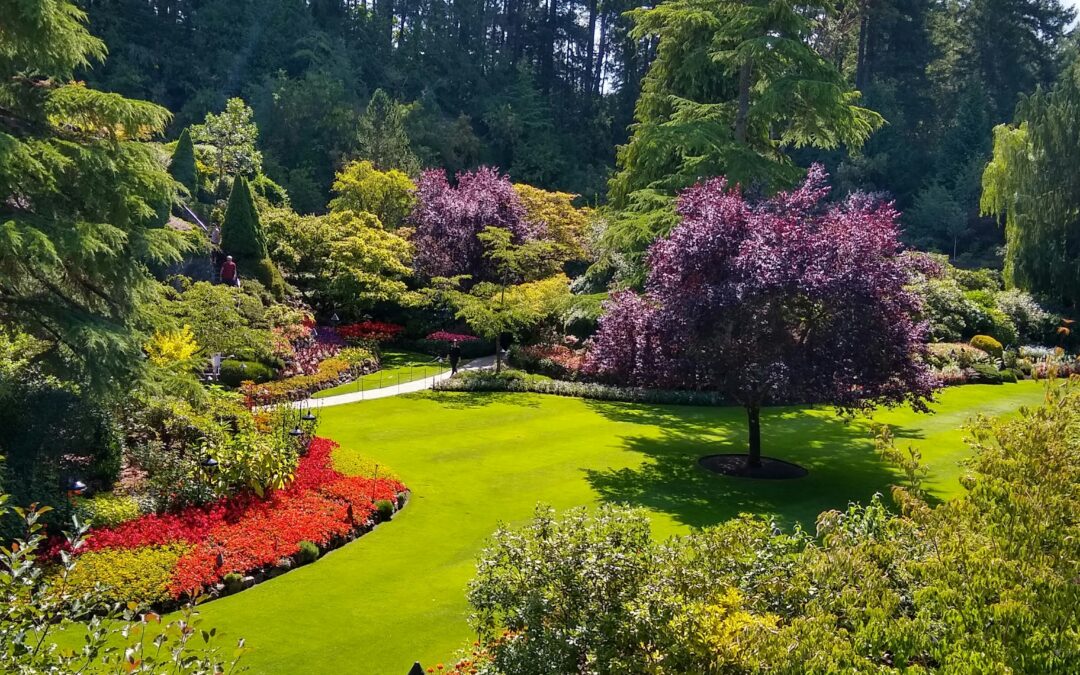What’s the Best Landscaping Grass?
So, what’s the best landscaping grass? The answer is it depends. There are many factors including climate, soil, and usage. Landscaping grass plays a crucial role in enhancing the beauty and functionality of outdoor spaces. With so many varieties available, choosing the right type of grass for your landscaping project is vital. Here are some common types of landscaping grass.
What’s the Best Landscaping Grass?
Bermuda Grass
Bermuda grass is a warm-season grass that thrives in hot and humid climates. Known for its drought tolerance and ability to withstand high temperatures, it forms a dense, medium-textured turf with a deep root system. Its ability to withstand foot traffic makes it suitable for sports fields and high-traffic areas.
Bermuda Grass is a versatile choice for landscaping projects where tough, resilient turf is desired. Its ability to recover quickly from stress and wear makes it an attractive option for areas that experience heavy use.
Zoysia Grass
Zoysia is another warm-season grass that is well-suited for hot and humid regions. Renowned for its exceptional drought tolerance and low maintenance requirements, it produces a fine-textured, dense turf with a medium-deep root system, and since it’s slow-growing, it requires less frequent mowing.
Zoysia Grass is a popular choice for those seeking a low-maintenance yet visually appealing lawn. Its ability to withstand heat, drought, and foot traffic makes it a versatile option for landscaping projects in warm climates.
St. Augustine Grass
St. Augustine is also a warm-season grass. It’s best known for its lush, dark green color. It has a medium-coarse texture and forms a dense turf with a shallow root system. Common in warmer climates, it has a broad blade and good shade tolerance.
St. Augustine Grass is valued for its lush appearance and ability to thrive in shaded areas where other grass types may struggle.
Kentucky Bluegrass
Kentucky Bluegrass is a cool-season grass that thrives in temperate climates with cool summers and cold winters. It produces a dense, fine-textured turf with a medium-deep root system. One drawback is that it’s susceptible to heat and drought stress. Its rich green color and soft texture are not only attractive, but since it’s tolerant of foot traffic and recovers well from damage, it’s well-suited for lawns, parks, and athletic fields. It’s often mixed with other grasses.
Kentucky Bluegrass is a popular choice for landscaping projects in regions with cooler climates due to its attractive appearance and ability to withstand heavy use.
Perennial Ryegrass
Perennial Ryegrass is another cool-season grass known for its adaptability to various climates; it forms a dense, medium-textured turf with a deep root system. It tolerates heat and drought better than most grasses. Often used for overseeding in cooler climates, it germinates quickly and adds a vibrant green color to lawns.
Perennial Ryegrass is highly versatile. Its quick establishment and ability to recover from wear make it a popular choice for areas that experience heavy use.
Fescue Grass
This cool-season grass is suitable for areas with moderate climates. It produces a fine-textured, dense turf with a shallow root system. It tolerates shade and drought conditions. There are different fescue grasses, such as tall and fine fescue. Resistant to pests and diseases common in other grass varieties, it’s often used in mixtures with other cool-season grasses due to its adaptability.
Fescue Grass is valued for its adaptability to various growing conditions and its ability to thrive in shaded areas where other grass types may struggle.
Buffalo Grass
Native to North America, particularly the Great Plains region, Buffalo grass has a high level of drought tolerance and low water requirements. Due to its slow growth rate, it doesn’t need mowed as often as many other grasses. The grass forms a dense, fine-textured turf with a light green color and is well-suited for areas with hot summers and low rainfall.
It’s ideal for low-maintenance lawns and naturalistic-looking landscapes and is resistant to pests and diseases common in other grass types.
Buffalo Grass is a popular choice for eco-friendly landscaping due to its water-saving properties and minimal need for fertilizers and herbicides. It provides a natural, prairie-like appearance and is an excellent option for creating a sustainable, low-maintenance lawn.
What Grass Is Best for Your Needs?
When selecting landscaping grass, consider factors such as climate, soil conditions, maintenance requirements, and desired appearance. Each type of grass has its own characteristics, such as growth habits, maintenance requirements, and climate preferences.
Proper installation and care are crucial to ensure a healthy and beautiful lawn. Regardless of which grass, all lawns need regular watering, mowing, and fertilization. Berger Hargis can help with installation, maintenance, and care, as well as help you choose the best grass for your needs.
How Can We Help You?
Berger Hargis has a company philosophy of providing personal excellence for all our services. Our growth and success have been due entirely to our commitment to honest, excellent customer service. The company has been built on the referral business we have received due to this philosophy. We work with residential customers and businesses in Central Indiana. Contact Us for a free analysis from one of our trained turf specialists.
About the Author
Randy Clark is a speaker, coach, and author. He publishes a weekly blog at Randy Clark Leadership.com. Randy is passionate about social media, leadership development, and flower gardening. He’s a beer geek, and on weekends he can be found fronting the Rock & Roll band Under the Radar. He’s the proud father of two educators; he has four amazing grandchildren and a wife who dedicates her time to helping others. Randy is the author of the Amazon bestseller The New Manager’s Workbook, a crash course in effective management.
You might also enjoy, Landscape Design Makes A Difference.
Photo by Sonny Smith on Unsplash
Go Back







